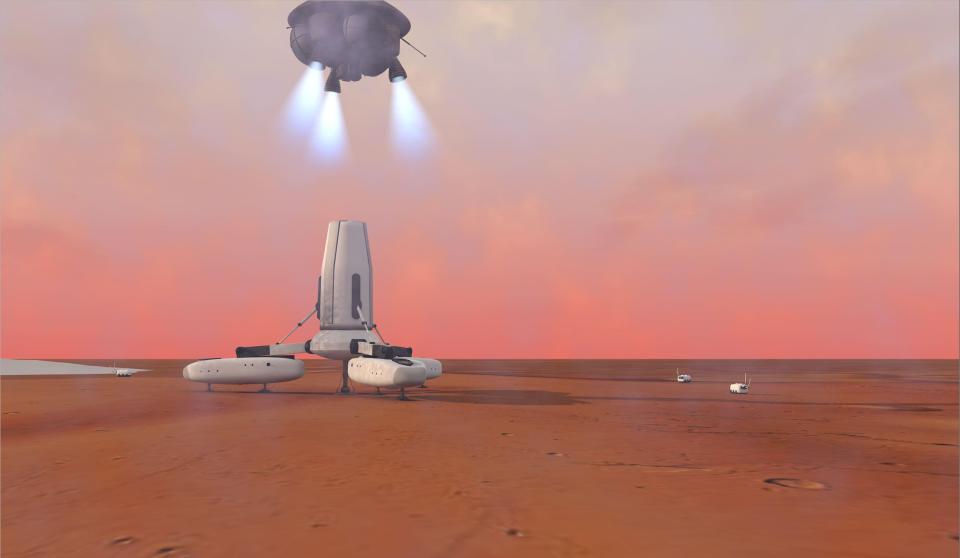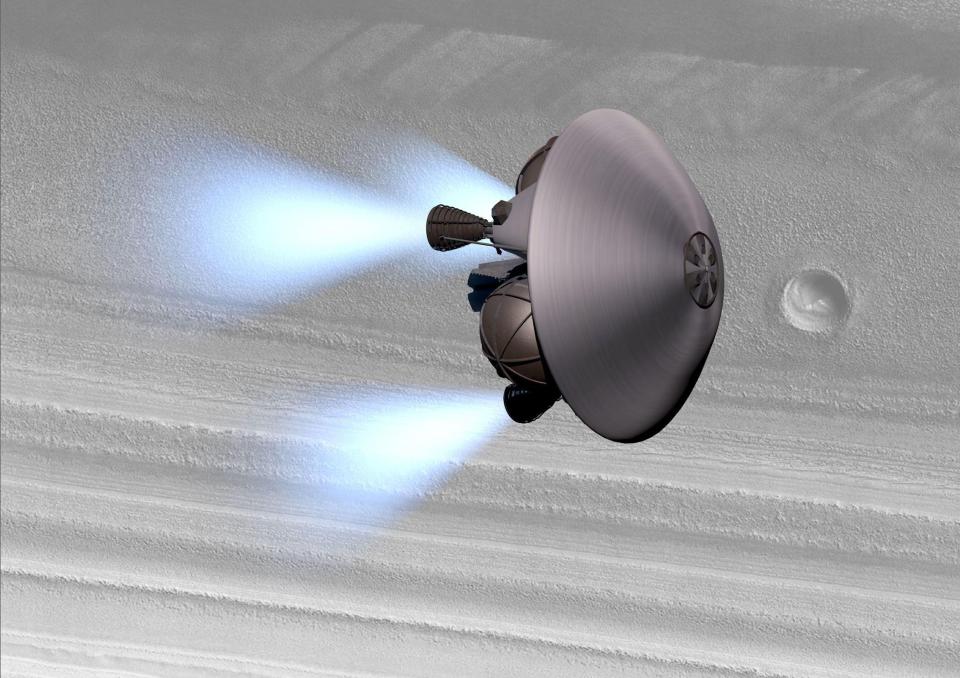Scientists draw up plan for ‘igloo base’ for first manned Mars mission

Last year, a NASA scientist said that the first people to live on Mars ‘have already been born’ – and the space agency is already planning missions to the Red Planet.
But what would a real base on Mars look like? How would people live there?
A team of EFPL scientists worked out exactly what would be needed for a research base on the Red Planet – and drew up plans for a Martian base.
The researchers believe that the poles would be the most likely place to build a base, as traces of life are most likely to be found in ‘layered deposits’ of ice and dust near the poles.
‘The poles may pose more challenges in the beginning, but they are the best location for the long term since they harbor natural resources that we may be able to use,’ says Anne-Marlene Rüede, lead author of the study.

The EPFL scientists’ strategy involves sending a six-person crew to Mars’ north pole during the polar summer, to take advantage of the 288 days of continuous light, and then return them safely to Earth. T
First, robots would be sent up to build a minimal living space for the crew and to test the natural resources available on site.
Then the crew would be brought in.
READ MORE FROM YAHOO NEWS UK:
Michel Barnier says Brexit deal ‘realistic’ within eight weeks
Killers who kidnapped and tortured jeweller in botched robbery jailed for life
Miners in Australia discover massive chunks of gold worth millions
North Korea expert attacks Donald Trump’s ‘repugnant grovelling’ before Kim Jong-un
Pluto should be classified as a planet again, say scientists
This approach would minimize the payload that space shuttles would have to carry and make the mission as safe as possible for the crew members. However, engineers have yet to develop rockets that can handle 110 metric tons of equipment.
The plan is to make maximum use of the natural resources found on Mars, first and foremost water. The discovery of ice at the poles means the base could theoretically produce water, oxygen and nitrogen – compounds essential for human life.
Other chemicals in Mars’ air (especially CO2) and soil (like silicon, iron, aluminum and sulfur) could potentially be used to make materials such as bricks, glass and plastic, or even fuels like hydrogen and methanol. All that would make the research base self-sustaining for the long haul.

But initially, vital resources like food and energy will have to be shuttled up from Earth. These might include freeze-dried food, a thorium reactor and batteries.
The three capsules would be built around the minimal living space and serve as airlocks between that space and the exterior.
Robots would set up these structures during the first phase of the mission. The dome would cover the entire base and would be made of polyethylene fiber covered with a three-meter thick layer of ice – creating a kind of igloo.
The dome would also represent an additional living space, provide a second barrier to protect the crew against radiation and micrometeoroids, and help keep the pressure constant inside the base.

 Yahoo News
Yahoo News 

